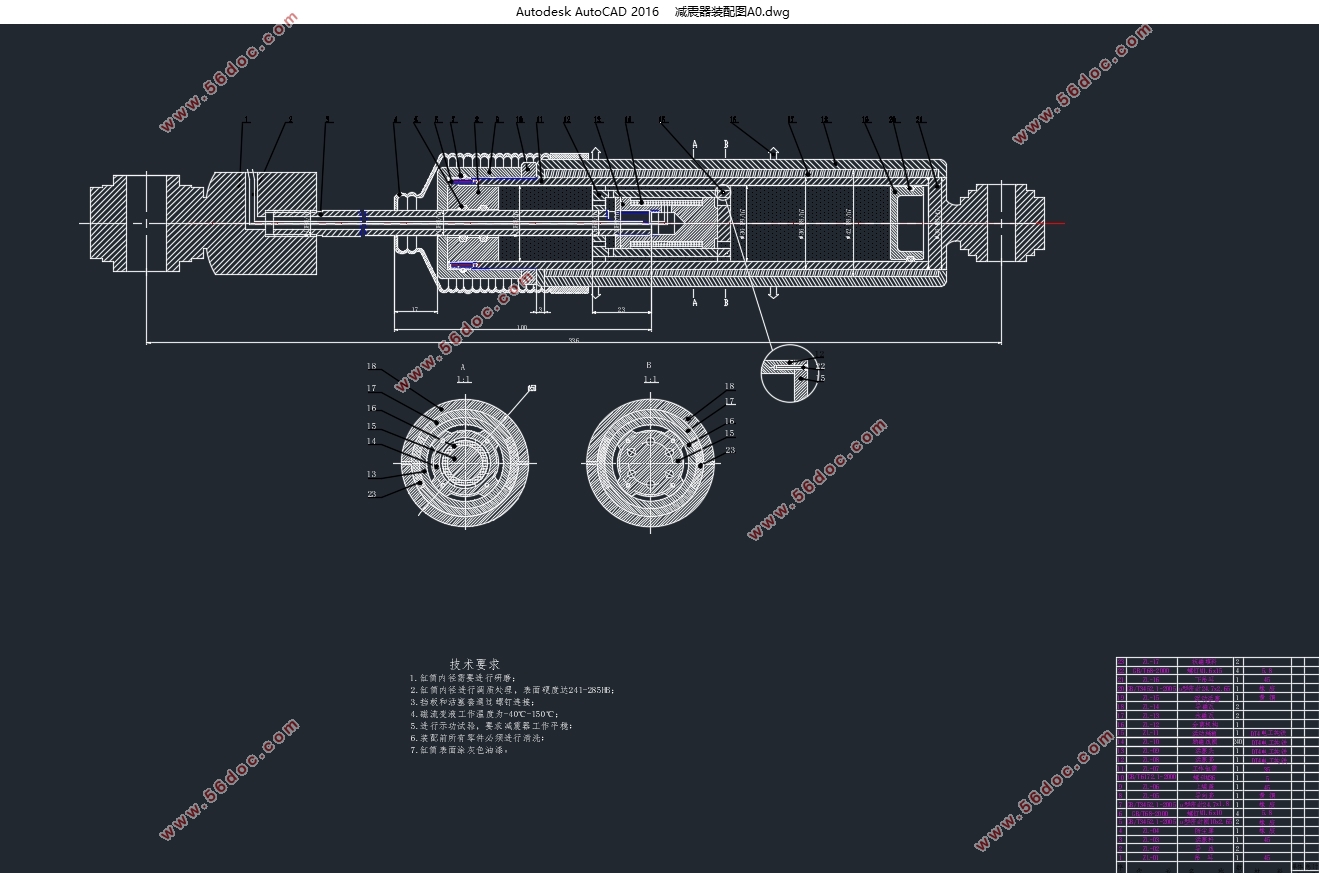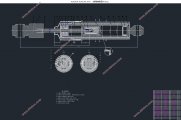汽车半主动悬架系统设计(含CAD零件图装配图)(任务书,开题报告,文献摘要,外文翻译,论文说明书16000字,CAD图纸9张)
摘要
汽车悬架系统在汽车中发挥着十分重要的作用,而减震器的性能很大程度上影响着悬架系统的性能。传统减震器虽然目前仍处于主导地位,但是其性能表现有时候不太尽如人意,而磁流变减震器的发明改善了悬架的性能。它不仅在结构、响应速度等方面优于传统减震器,而且能随着路面的实际状况对相关参数进行相应的调节。
本文参考了国内外许多关于磁流变减震器的文献之后,设计了一款伸张行程与压缩行程阻尼通道不一致的减震器,并学习运用Matlab/Simulink设计了半主动悬架系统的PID控制器,建立了半主动悬架模型和被动悬架模型,并对它们分别进行仿真,以均方根值和最大值的衰减率为评价指标,将仿真结果进行对比分析来验证磁流变减震器和控制器设计的有效性。本文主要研究了以下内容:
首先,介绍了磁流变减震器国内外的一些研究的情况,讨论了基于磁流变液体的工作模式,对三种工作模式分别对应的三种阻尼力力学模型进行了分析,再结合本次所设计的减震器的活塞组件的相关结构,分别分析伸张与拉伸行程的阻尼力,建立了该次所设计的减震器的阻尼力的力学模型。
其次,通过相关查阅文献,确定了磁流变减震器活塞组件的内部结构,参考减震器的设计公式与步骤确定了缸筒的内外径、活塞杆直径、阻尼通道间隙等结构参数。
接着,对本次设计的减震器进行了外特性仿真,说明了设计的磁流变减震器的有效性。
最后,建立了二自由度的车辆悬架仿真模型,并在其中加入了PID控制模块,同时也建立了与之对比的被动悬架的仿真模型,将二者放在同等条件下进行仿真,分别绘制出车身垂直加速度对比曲线,悬架动挠度对比曲线以及轮胎动载荷的对比曲线,并计算出它们均方根值的衰减率和最大值的衰减率,分析比较二者在性能上面的表现,验证设计的有效性。
关键词:半主动悬架;磁流变减震器;PID控制;仿真
Abstract
The car suspension system plays an important role in the car, and the performance of the shock absorber affects the performance of the suspension system to a large extent. Although the traditional shock absorber is still in the leading position, but its performance is sometimes not so satisfactory, and the invention of magnetorheological damper to improve the performance of the suspension. It is not only in the structure, the response speed is superior to the traditional shock absorber, but also with the actual situation of the road to the relevant parameters of the corresponding adjustment.
After a lot of references on the magnetorheological damper are introduced in this paper, a shock absorber is designed, which is inconsistent with the compression stroke damping channel, and the PID control of the semi-active suspension system is designed by using Matlab / Simulink. The semi-active suspension model and the passive suspension model are established, and the simulation results are carried out. The simulation results are compared with the decay rate of the root mean square and the maximum value to verify the magnetorheological damping The effectiveness of the design of the controller and the controller. This paper mainly studies the following:
Firstly, some researches on magnetorheological damper are introduced. At the same time, the mechanical model of three kinds of damping forces is analyzed, and then the mechanical model of magneto-rheological fluid is analyzed. The damping force of the shock and the tensile stroke is analyzed, and the mechanical model of the damping force of the designed shock absorber is established.
Secondly, through the relevant literature, the internal structure of the piston component of the magnetorheological shock absorber is determined. The structural parameters such as the inner and outer diameter of the cylinder, the diameter of the piston rod and the clearance of the damping channel are determined by referring to the design formula and steps of the shock absorber.
Then, the external characteristics of the shock absorber were simulated, and the effectiveness of the designed magnetorheological damper was explained.
Finally, a two-degree-of-freedom vehicle suspension simulation model is established, and the PID control module is added. At the same time, the simulation model of the passive suspension is established, and the simulation is carried out under the same conditions. The contrast curves of the vertical acceleration curve, the contrast curve of the suspension and the dynamic load of the tire are plotted, and the decay rate of the RMS value and the decay rate of the maximum value are calculated. The performance of the two is analyzed and compared.,and it verify the validity of the design.
Keywords:semi-active suspension;magnetorheological damper;PID control;simulation


目录
摘要 I
Abstract II
第1章绪论 1
1.1课题研究背景与意义 1
1.2磁流变液以及磁流变效应 2
1.2.1磁流变液的定义 2
1.2.2磁流变效应 2
1.2.3磁流变减震器 2
1.3磁流变液的工作模式 2
1.4磁流变液阻尼器国内外的研究现状 3
1.4.1国际对磁流变液的研究情况 3
1.4.2国内对磁流变液的研究情况 4
1.5本文研究的主要内容 4
1.6本章小结 5
第2章磁流变减震器阻尼器力学模型 6
2.1阻尼力学模型 6
2.1.1流动模式下的磁流变减震器阻尼力模型 6
2.1.2剪切模式下的磁流变减震器阻尼力模型 8
2.1.3混合模式下的磁流变减震器阻尼力模型 9
2.2本减震器的阻尼力模型 9
2.3本章小结 11
第3章磁流变阻尼器设计 12
3.1结构及参数设计 12
3.1.1缸筒的设计 12
3.1.2活塞的设计 12
3.1.3活塞杆的设计 13
3.1.4其他零部件的设计 14
3.1.5磁流变阻尼器的工作原理 16
3.1.6减震器材料的选择 17
3.2磁路设计 18
3.2.1压缩行程的磁阻 18
3.2.2伸张行程的磁阻 20
3.3本章小结 20
第4章磁流变减震器的外特性仿真 22
4.1拉伸行程的建模与仿真 22
4.2压缩行程的建模与仿真 24
4.3外特性仿真分析 26
4.4本章小结 27
第5章基于磁流变减震器的1/4悬架控制系统设计及仿真 29
5.1 1/4车辆悬架模型及参数 29
5.2模型仿真 30
5.2.1路面输入模型 30
5.2.2动力学模型 30
5.2.3控制仿真模型 31
5.2.4仿真结果分析 32
5.3本章小结 33
第6章总结与展望 34
6.1总结 34
6.2展望 34
参考文献 35
附录 36
致谢 37
|





